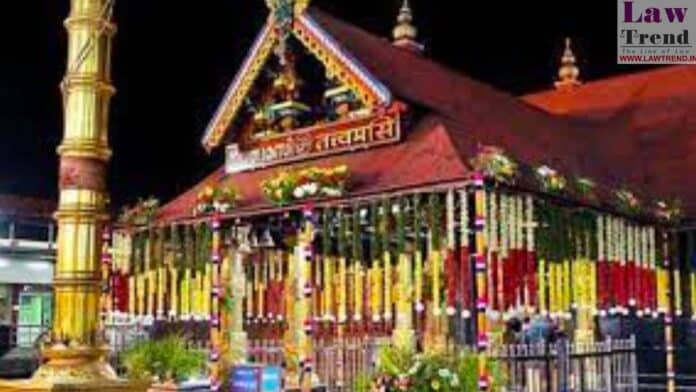The Kerala High Court on Wednesday came down heavily on the Travancore Devaswom Board (TDB) over serious lapses in the Sabarimala temple gold-plating project and directed the Special Investigation Team (SIT) to examine whether the facts of the case attract provisions of the Prevention of Corruption Act against any of the Board’s officials.
A division bench of Justice Raja Vijayaraghavan V and Justice K V Jayakumar observed that there were “grave irregularities” and possible acts of “misappropriation” in the gold-plating of the temple’s Dwarapalaka (guardian deity) idols and other sacred artefacts.
The court said such irregularities appeared to have been carried out with “the active connivance of officials of the Travancore Devaswom Board from the highest echelon of authority down to the subordinate staff involved in temple administration.”
The bench noted that the TDB’s minutes book was updated only up to July 28, 2025, and even those entries were “irregular and incomplete.” More alarmingly, the Board’s order dated September 2, 2025—granting permission for repair and gold-plating of the Dwarapalakas at Smart Creations, Chennai—had “no entry whatsoever in the minutes book.”
Calling this omission “a matter of utmost seriousness,” the court said it pointed to “deeper systemic deficiencies” and, at worst, “a deliberate attempt to obscure or conceal irregularities.”
The bench also noted that Bengaluru-based businessman Unnikrishnan Potty, the prime accused in the case, was given “free rein” to carry out the gold-plating works in Chennai. Potty, who was recently arrested, allegedly began his “dubious activities” in collusion with certain Devaswom officials, starting with the purported sponsorship of gold-plating the Sreekovil (sanctum sanctorum) door.
“What appears at first glance to be an act of devotion has, on closer scrutiny, all the hallmarks of a calculated deceit,” the bench remarked.
The court recalled that McDowell & Co. Ltd. had originally gold-cladded the Sreekovil, Hundi, Dwarapalakas, and other artefacts in 1998–1999 using 30 kilograms of gold. However, in 2019, large quantities of this gold were allegedly removed, and only superficial re-plating with minimal gold was carried out.
When this thin plating faded, officials allegedly attempted to “cover up the earlier pilferage by clandestinely transporting the artefacts to Chennai under the pretext of re-plating” in 2025—without obtaining court permission.
The bench said that “every official who played any role, whether by authorising, facilitating, or wilfully overlooking these violations, has thereby aided and abetted the commission of the act, rendering themselves jointly and severally responsible for the desecration and misappropriation of sacred property.”
Allowing the SIT’s request for scientific testing, the court permitted the team to weigh and analyse the artefacts gold-plated in 1998, 2019, and 2025 to determine the actual loss of gold. The SIT has been directed to complete the process by November 15, before the start of the Mandala-Makaravilakku pilgrimage season.
The bench issued these directions in a new suo motu writ petition to monitor the investigation and closed earlier proceedings initiated in connection with the unauthorised transport of Dwarapalaka idols to Chennai.




